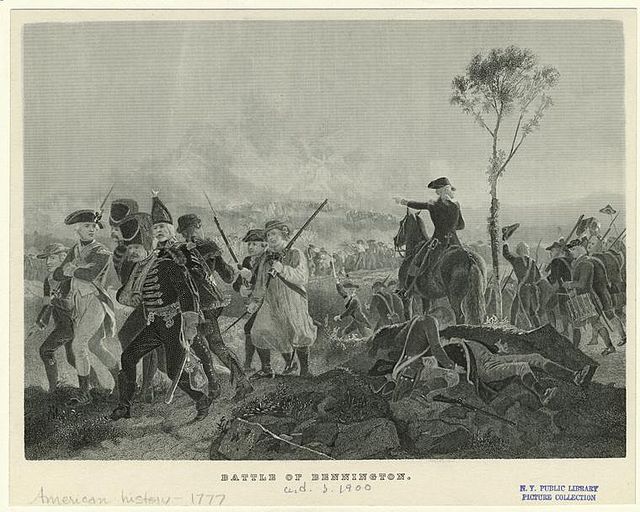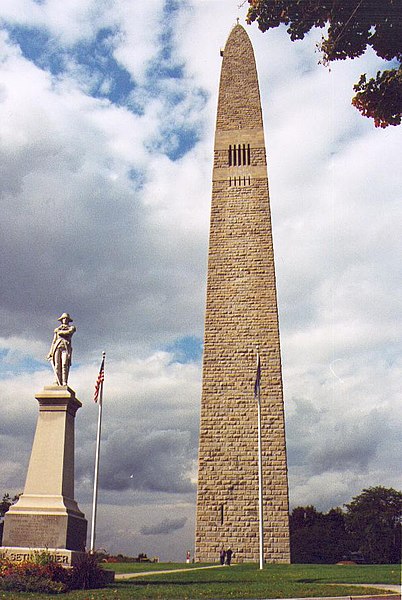The Battle of Bennington was a battle of the American Revolutionary War, part of the Saratoga campaign, that took place on August 16, 1777, on a farm in Walloomsac, New York, about 10 miles (16 km) from its namesake, Bennington, Vermont. A rebel force of 2,000 men, primarily New Hampshire and Massachusetts militiamen, led by General John Stark, and reinforced by Vermont militiamen led by Colonel Seth Warner and members of the Green Mountain Boys, decisively defeated a detachment of General John Burgoyne's army led by Lieutenant Colonel Friedrich Baum, and supported by additional men under Lieutenant Colonel Heinrich von Breymann.
Battle of Bennington, c. 1900
The Bennington Battle Monument in Bennington, Vermont
150th anniversary of Battle of Bennington commemorative stamp
Historic Marker marking the Bennington Battlefield Park
The Saratoga campaign in 1777 was an attempt by the British high command for North America to gain military control of the strategically important Hudson River valley during the American Revolutionary War. It ended in the surrender of the British army, which historian Edmund Morgan argues, "was a great turning point of the war, because it won for Americans the foreign assistance which was the last element needed for victory."
Surrender of General Burgoyne a portrait by John Trumbull
General John Burgoyne, portrait by Joshua Reynolds
Charles Gravier, comte de Vergennes, portrait by Antoine-François Callet
Fort Ticonderoga from Mount Defiance







